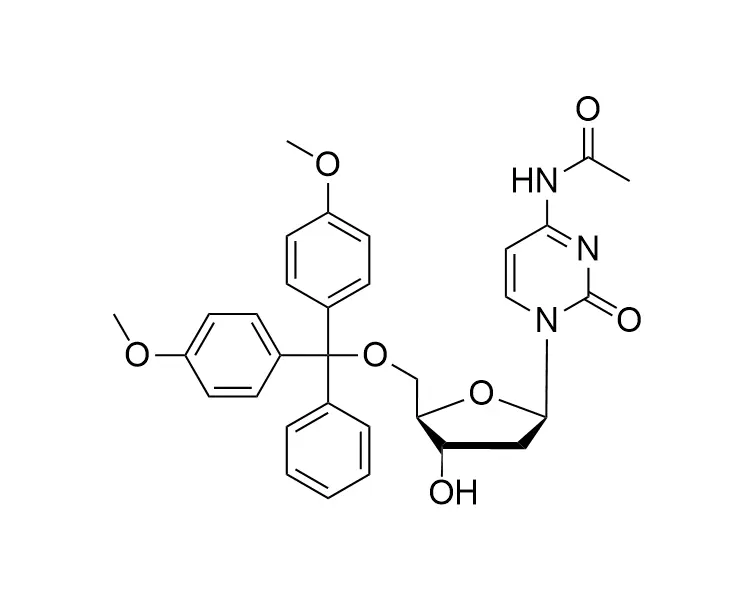While nucleoside phosphoramidite chemistry is fundamental to the synthesis of nucleotides, its versatility extends far beyond the basics of nucleotide production. In this passage, as a professional pharmaceutical intermediates factory, we will explore the diverse and specialized applications of nucleoside phosphoramidite chemistry, delving into how this intricate field contributes to advancements in medicine, diagnostics, and cutting-edge research.
Innovative Drug Development
In the realm of drug development, nucleoside phosphoramidite chemistry plays a crucial role in crafting novel pharmaceutical agents. By employing sophisticated synthetic strategies, researchers can introduce modifications to nucleoside structures, tailoring their properties for enhanced pharmacokinetics, increased bioavailability, and improved target specificity. This fine-tuning allows for the creation of nucleoside analogs with unique therapeutic benefits, paving the way for innovative treatments in areas such as antiviral therapies and cancer treatment.
Diagnostic Innovations
Nucleoside phosphoramidite finds application in the field of diagnostics, contributing to the development of advanced molecular diagnostic tools. Custom-designed nucleotide probes synthesized through phosphoramidite chemistry enable precise detection of genetic mutations, biomarkers, and specific DNA or RNA sequences. These diagnostic tools, ranging from polymerase chain reaction (PCR) assays to DNA sequencing techniques, leverage the flexibility of nucleoside phosphoramidite chemistry to achieve unparalleled accuracy in identifying genetic variations associated with diseases.
RNA Therapeutics and Gene Editing
The advent of RNA therapeutics and gene editing technologies has brought nucleoside phosphoramidite chemistry into the spotlight. In the synthesis of RNA molecules, phosphoramidite chemistry allows for the incorporation of modified nucleotides, enhancing RNA stability, and influencing its interactions with cellular machinery. Moreover, the development of gene editing technologies, such as CRISPR-Cas9, relies on specialized nucleoside phosphoramidite chemistry to construct guide RNA molecules for precise and targeted genetic modifications.
Epigenetic Modifications
The dynamic field of epigenetics benefits significantly from nucleoside phosphoramidite chemistry. Researchers utilize modified nucleoside analogs to study and manipulate epigenetic modifications, such as DNA methylation and histone modifications. These modified nucleotides can be incorporated into DNA or RNA during synthesis, allowing scientists to explore the intricacies of epigenetic regulation and potentially develop therapeutic interventions for conditions influenced by epigenetic factors.
Antisense Oligonucleotides
Nucleoside phosphoramidite chemistry is integral to the design and synthesis of antisense oligonucleotides (ASOs), a class of molecules with therapeutic potential. ASOs are short nucleotide sequences designed to bind to specific RNA targets, modulating gene expression. Through precise control over the synthesis process, researchers can tailor ASOs with enhanced stability, affinity, and target specificity, opening avenues for the treatment of genetic disorders and other conditions at the RNA level.
Biosensors and Nanotechnology
Nucleoside phosphoramidite chemistry plays a vital role in the creation of nucleic acid-based biosensors and nanodevices. These biosensors leverage the sequence specificity of nucleoside phosphoramidite-synthesized probes to detect specific DNA or RNA sequences, enabling applications in environmental monitoring, disease diagnostics, and personalized medicine. Additionally, nucleoside phosphoramidite chemistry contributes to the construction of nucleic acid-based nanomaterials with unique properties for use in drug delivery and nanotechnology.
The realm of nucleoside phosphoramidite chemistry extends well beyond the foundational steps of nucleotide synthesis. Its applications in drug development, diagnostics, RNA therapeutics, epigenetic studies, antisense oligonucleotides, biosensors, and nanotechnology showcase the versatility and adaptability of this field. As researchers continue to push the boundaries of nucleoside phosphoramidite chemistry, its specialized applications hold immense promise for shaping the future of medicine, diagnostics, and molecular research.

 En
En Cn
Cn



